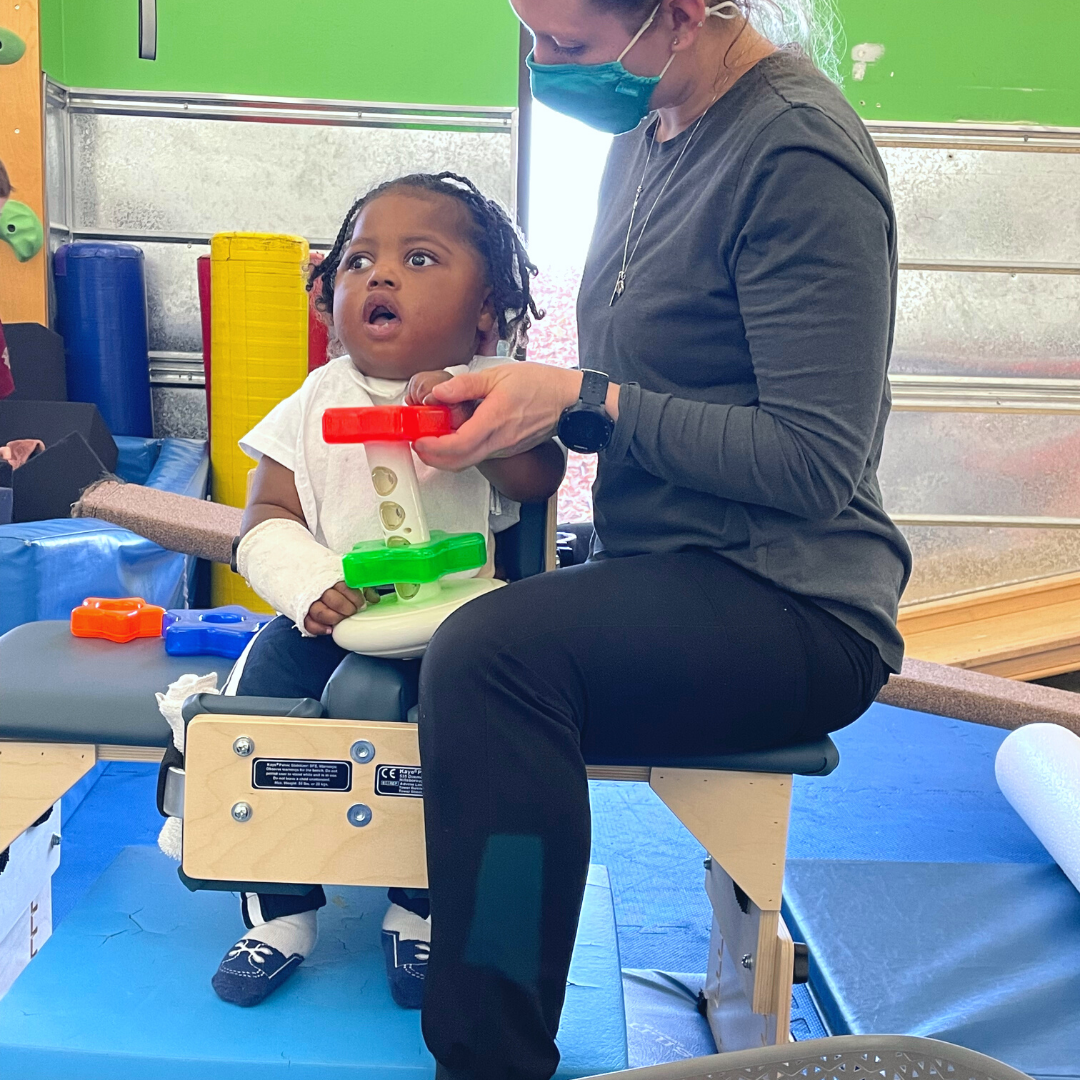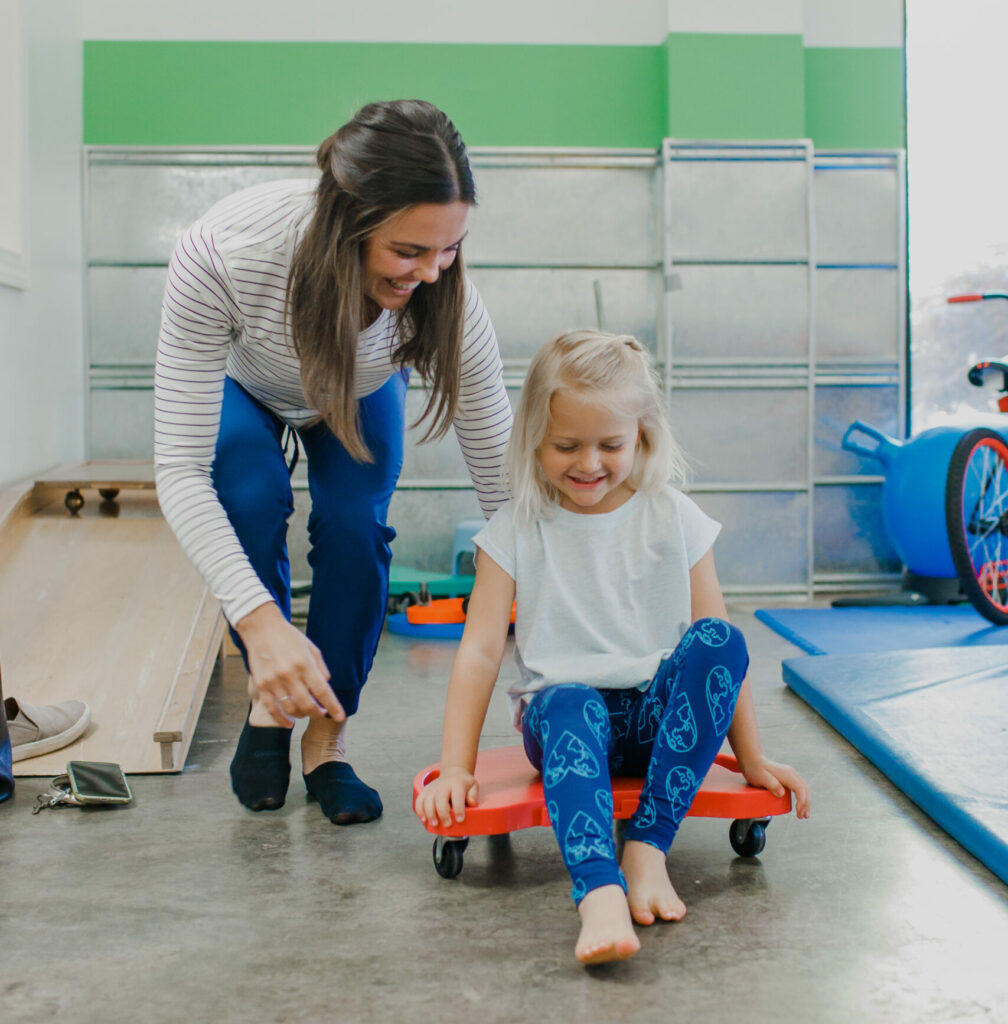Physical Therapy

Who This Therapy is For?
Physical therapy at Emerge can support children with or who are experiencing:
- Delayed acquisition of gross motor skills
- Balance
- Coordination
- Strength or poor alignment
- Endurance
- Body awareness and proprioception
- Running or walking pattern
- Poor posture and scoliosis
- Torticollis and plagiocephaly
Additional Specialty Services
Total Motion Release
Total Motion Release (TMR) involves assessing biomechanics, uncovering root causes behind physical limitations, and completing treatment through active movement interventions that target specific body areas to release blocks in mobility. This is followed by intentional therapeutic activities to organize and realign the body through sensory integration, and targeted muscular activation to allow movement and stability through the newly increased range of motion. This technique allows clients to improve their body movements and gives them the ability to utilize new movement in a functional way for lasting improvement. TMR techniques are safe to be used in treatment for patients of all ages!
Infant Therapeutic Services
Our therapists are equipped with the tools to help support infants reach their early developmental milestones (such as rolling, sitting upright, or crawling), torticollis and/or plagiocephaly, feeding difficulties, tongue and lip ties, parent/child bond, and more. Emerge offers a variety of programs for infants including one-on-one sessions, consultative services, infant massage training, and parent workshops.
Durable Medical Equipment (DME)
Our therapists have the ability to assist families with attaining and implementing DME. They make a referral to the appropriate provider, write a letter of medical necessity, and work directly with a technician to determine the most appropriate DME for your child.
Yoga-Based Physical Therapy
Yoga based physical therapy sessions incorporate some of the techniques used in yoga to help children meet their physical therapy goals. This type of physical therapy intervention often uses diaphragmatic breathing to help children calm and regulate their nervous system and improve their focus and attention to task. It also incorporates some of the postures and movement patterns used in yoga to help children balance their muscle groups, improve muscular stability and strength, and improve flexibility. Yoga based physical therapy can help children feel more calm and comfortable in their own bodies, improve quality of sleep, decrease pain, and improve flexibility and strength.
Dynamic Movement Intervention (DMI)
Dynamic Movement Intervention (DMI) is a therapy technique used in PT and OT to treat children with motor delays by improving automatic postural responses and promoting progress towards developmental milestones. The goal of DMI is to provoke a specific active motor response from the child in response to defined exercises prescribed by the therapist. This intervention incorporates current research on neurorehabilitation technologies and methodologies. DMI stimulates neuroplasticity to facilitate new neuronal connections and development of motor milestones.
Orthotics
Our physical therapists work with your child and partnered organizations to create and implement orthotics to improve stability, lower extremity alignment, and arch support while standing and walking.

Our Approach (methodology)
Emerge is a neurodiversity-affirming clinic. We are play-based, child-led, and use a “sensory lense” to help guide treatment. Each of our locations offers a wide variety of sensory-rich environments. Regardless of the type of therapy, our goal is to find fun and motivating ways to encourage each child. We carefully consider their special interests and unique skill sets when planning treatment sessions. Nearly all our staff have completed some level of training within the DIR/Floortime structure and incorporate concepts and principles into daily practice.
